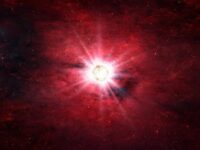My generation may be the last to be able to gaze upon a star-studded sky.
One night in early 2017, from the terrace of a relative’s home in a tiny village in India, I was astonished and delighted to see the sky packed with stars. Many glowed dimly but steadily. A handful of them had to be planets in our system. Countless of them were untouched worlds far away.
Four years later, I still remember that feeling of wonder and yearning to share that with the next generation. While they will see the night sky dotted with lights, I fear those dots will consist more of satellites than of stars. The few stars that will be visible may be indistinguishable from the swarm of satellites that will be orbiting above the Earth.
The few stars that will be visible may be indistinguishable from the swarm of satellites that will be orbiting above the Earth.
Since May 2019, SpaceX has been steadily deploying satellites into low-Earth orbit to build a satellite constellation. It placed 60 satellites in orbit on February 5, according to tweets from the company. Missions will continue, culminating in 42,000 satellites in orbit.
SpaceX plans to provide a high-speed internet connection to every corner of earth through Starlink. Musk told reporters in 2019 that Starlink is “a way for SpaceX to generate revenue” to “develop more advanced rockets and spaceships.”
“We think this is a key stepping stone on the way to establishing a self-sustaining city on Mars and a base on the moon,” said Elon Musk in 2019.
The first step to going to the moon and Mars is to have a clear orbit to launch spacecraft. It seems contradictory that Musk is crowding the orbit with satellites while using that money to try and get through the same interface.
In September 2020, Washington state’s first responders tweeted appreciation and used Starlink internet to connect with residents after a fire destroyed parts of the town of Malden. But positive instances of an expensive internet connection are few and far between.
The satellites, which are already 99 percent brighter than other satellites in space, change orbits autonomously. For astronomers, “observations cannot be scheduled to avoid them,” according to a prepublished paper outlining concerns astronomers face.
SpaceX satellites are arranged in a line, just 200 miles above Earth, where they leave trails of reflected light in their wake. According to the paper, the satellites are bright enough to be seen with the naked eye, especially before sunrise and after sunset — when most observations in astronomy occur. The satellites reflect sunlight, thereby blinding sensitive telescopes from seeing past their scintillating barrier. Even if only a handful of them pass through a telescope’s view, they mar observations.
According to the paper, the satellites are bright enough to be seen with the naked eye, especially before sunrise and after sunset — when most observations in astronomy occur.
More than 2,000 astronomers on a blog are formally appealing to institutions and governments to intervene so that they can be guaranteed “the right to observe a sky free from unnecessary artificial polluting sources.”
The backlash led SpaceX to darken the satellites. But they couldn’t darken the solar panels (which made up 75 percent of the brightness) and keep the satellites running at the same time, making the entire effort nearly useless. So, satellites are now “photobombing” astronomy images.
Soon, these satellites will redefine astronomy. Gone will be the Big Dipper, Orion, and other constellations. Those familiar patterns will be replaced by artificial satellite constellations. I fear that one day my kids might say, “Look, Mommy! I see the Starlink Constellation!”
In an article for Scientific American, research astronomer Ronald Drimmel mourns the loss of not just stars from view, but also the significance of a star-filled sky. For generations, it has reminded every person who has looked up “that we and our problems are small, and that our meaningfulness may finally lie just in our ability to recognize and admire the wonder and beauty of a universe larger than us, yet of which we are a part.”
We are very close to losing that dome and our sense of connectedness along with it. The night sky I’d looked up at on that night in 2017 continues to fuel me with wonder. It has influenced my interest in astronomy and in science writing. Future generations will lose a few stargazing experiences. But more than that, they will not even get a chance to feel that awe and wonder that has inspired so many astronomers for their entire lifetimes. That is terrifying and sorrowful.
Image source: Victoria Girgis/Lowell Observatory



